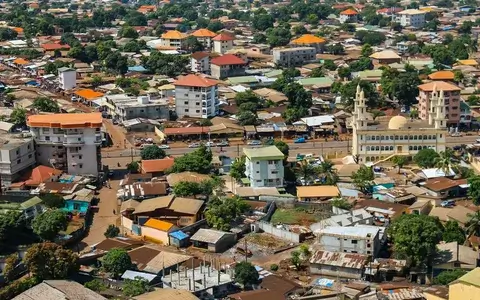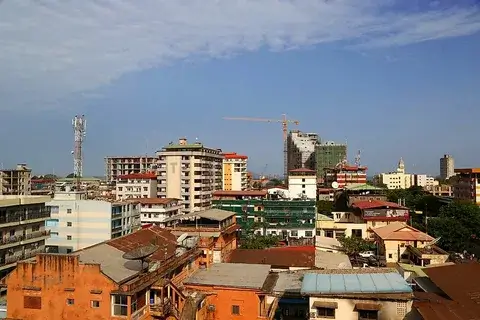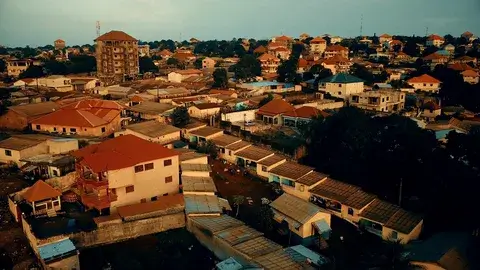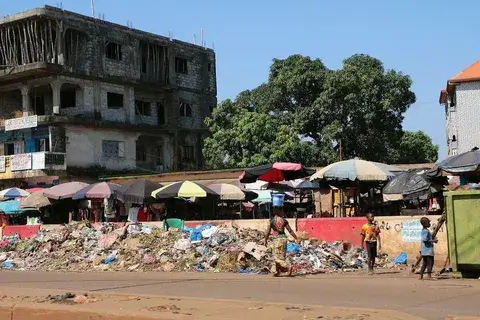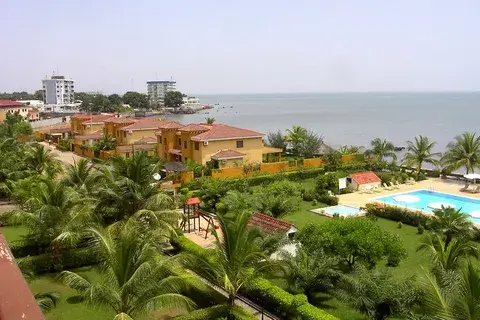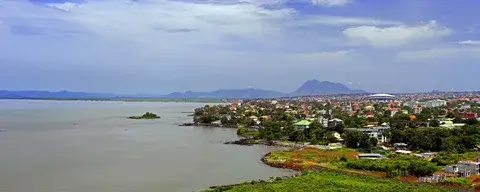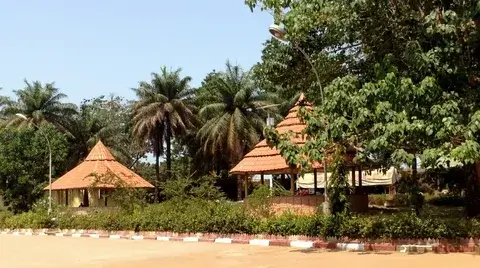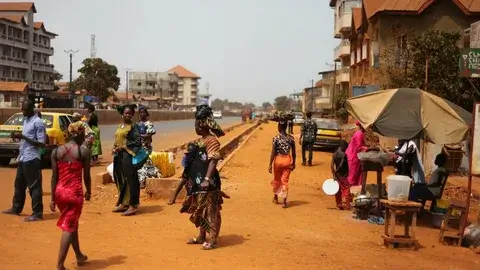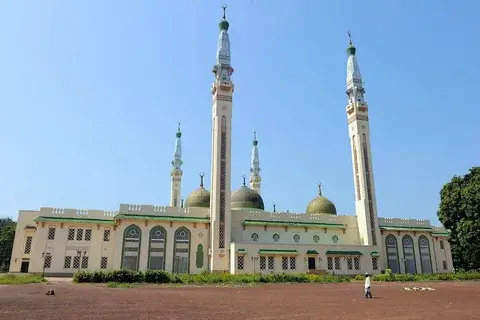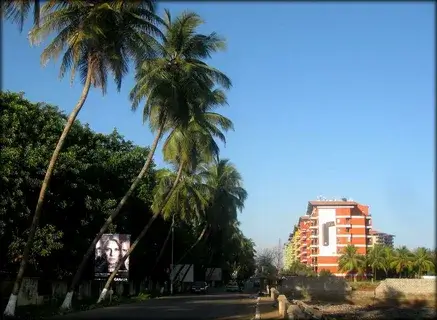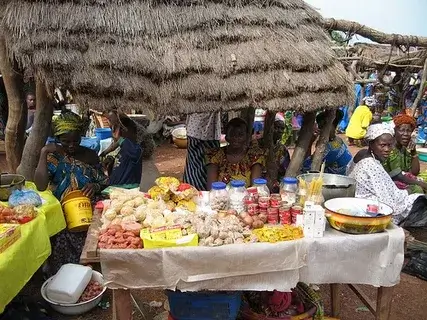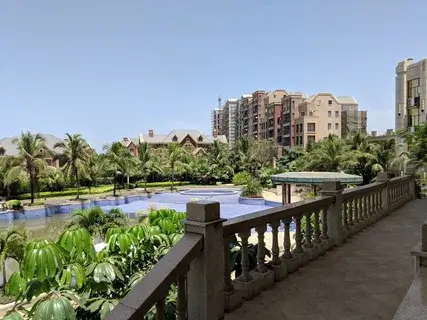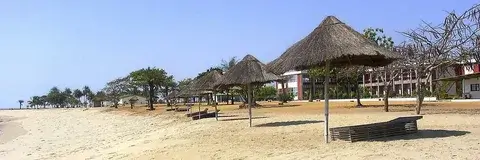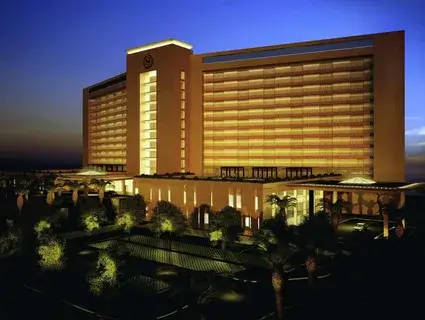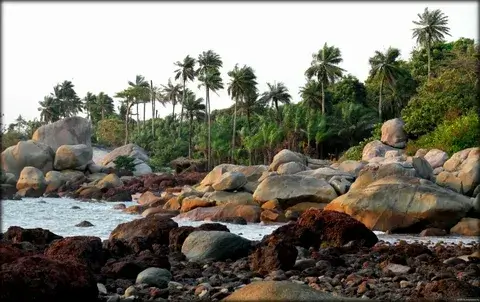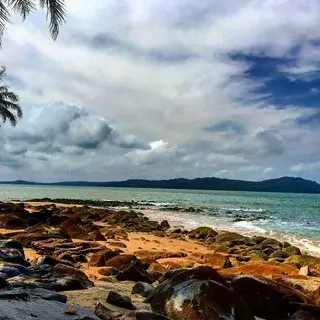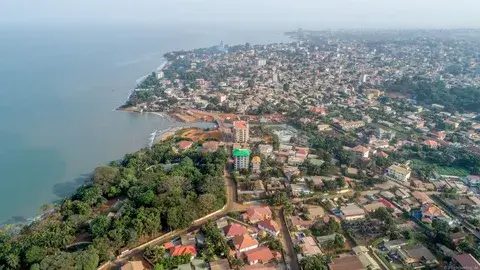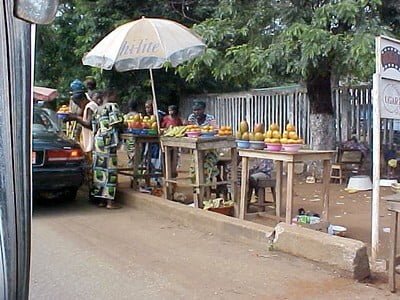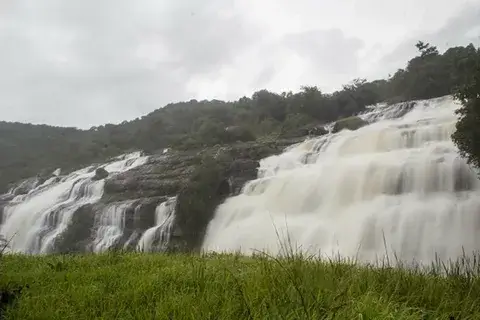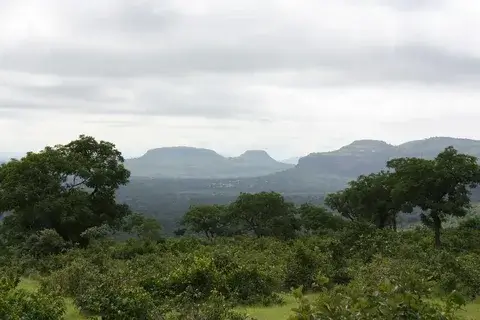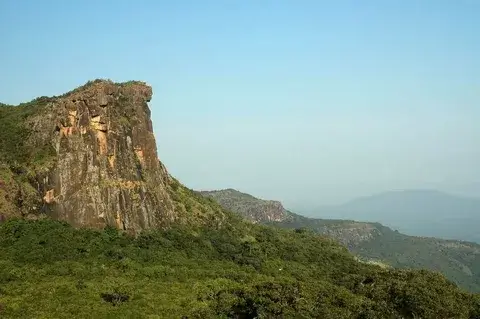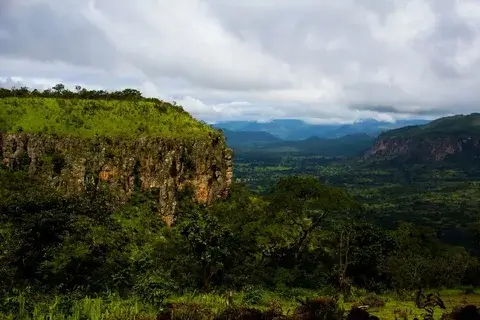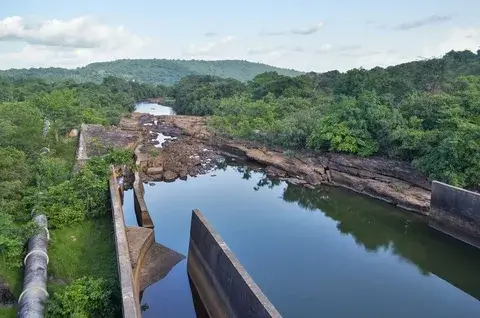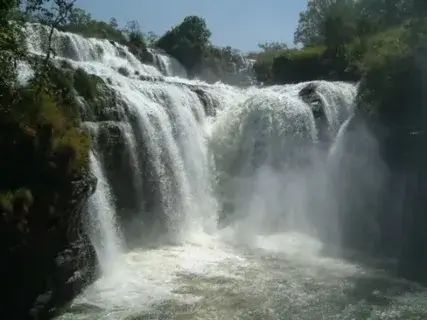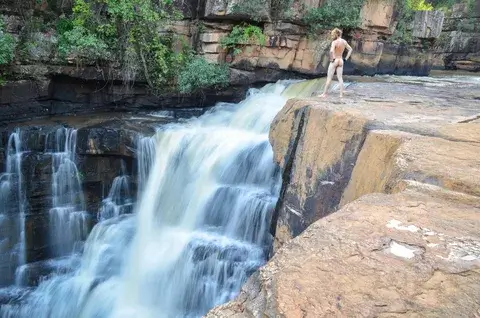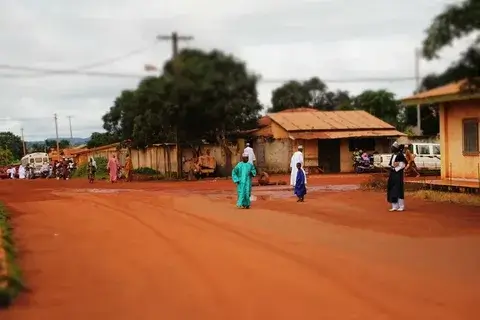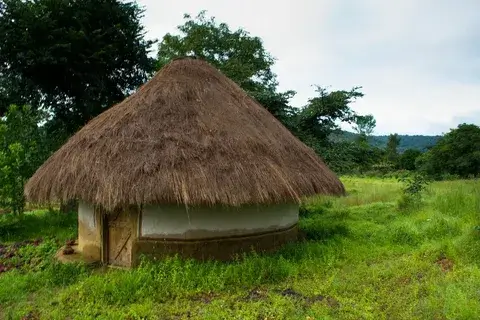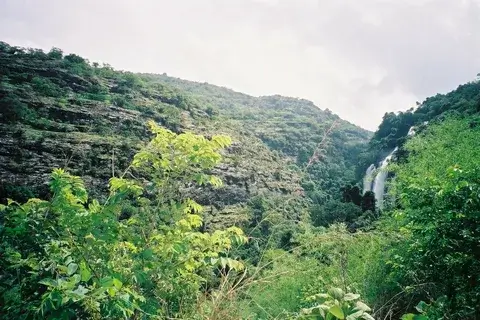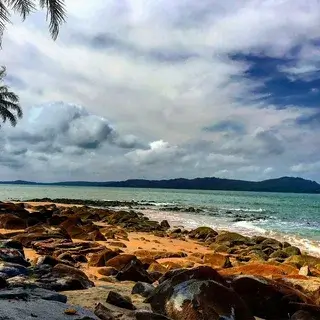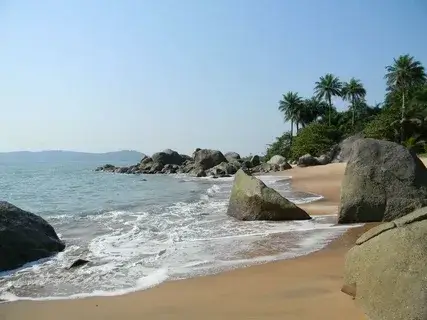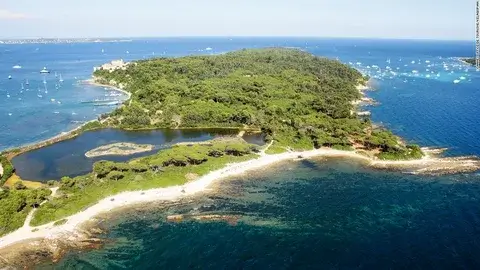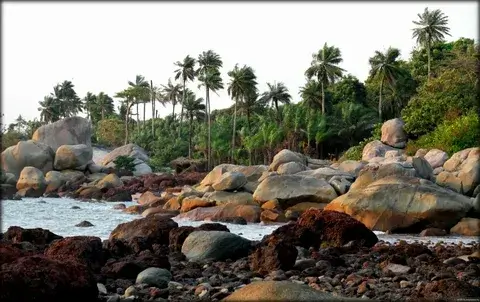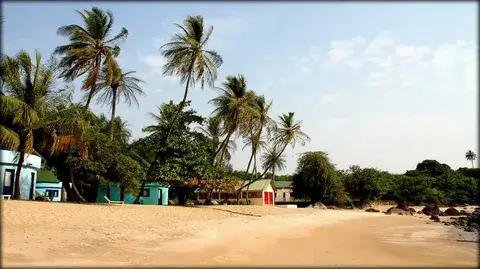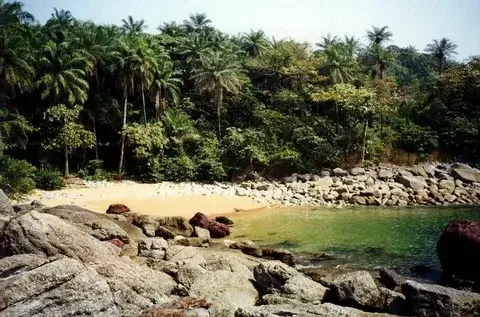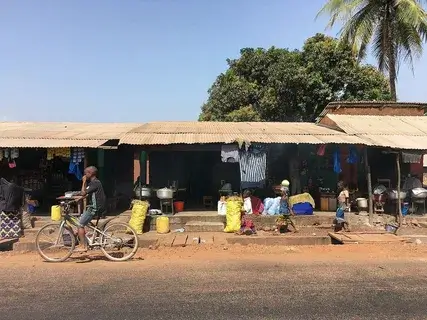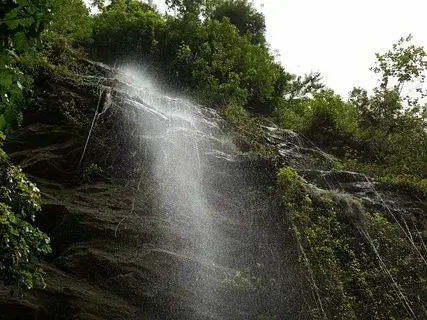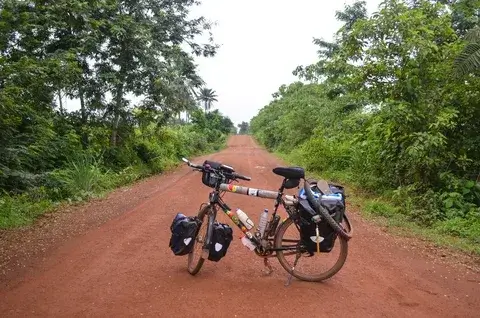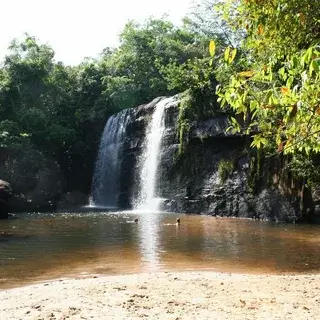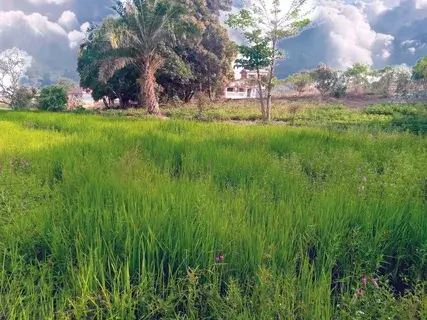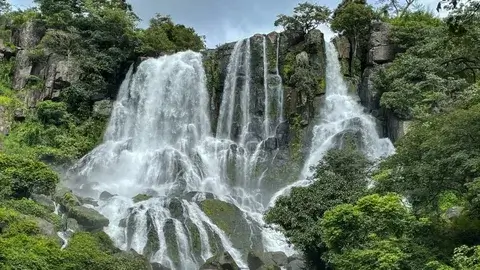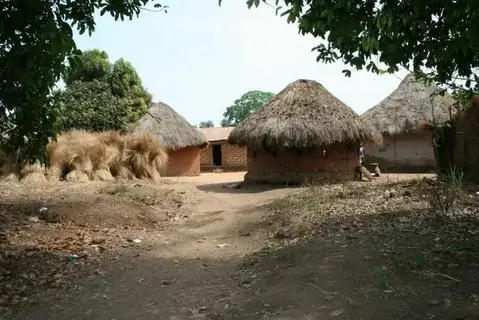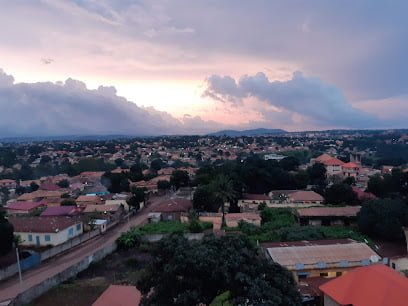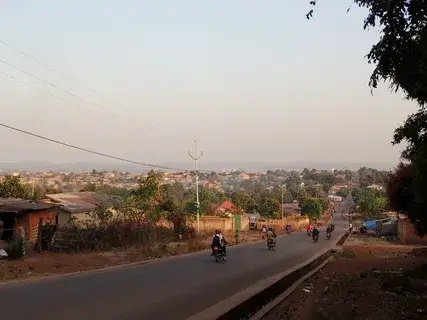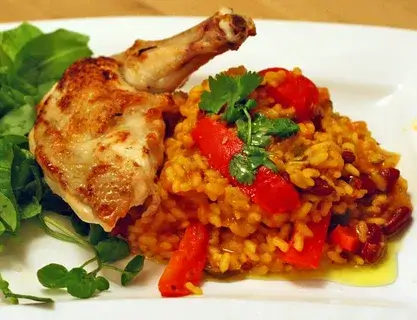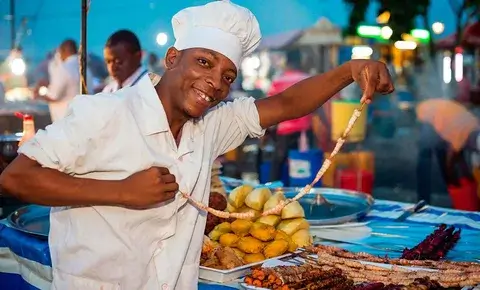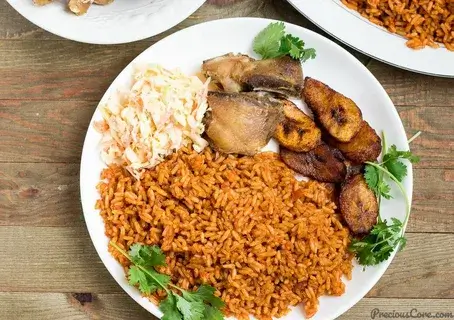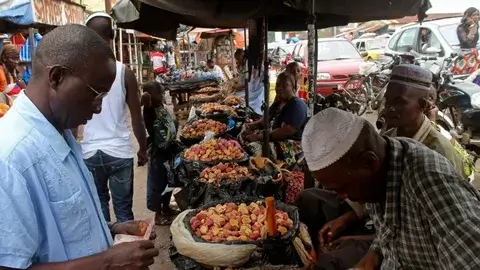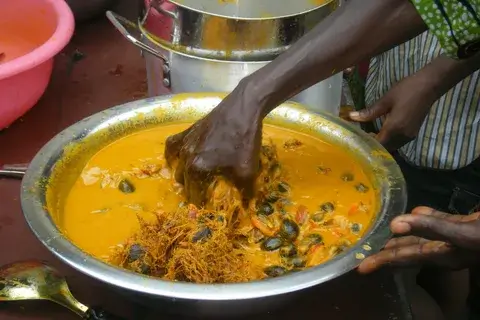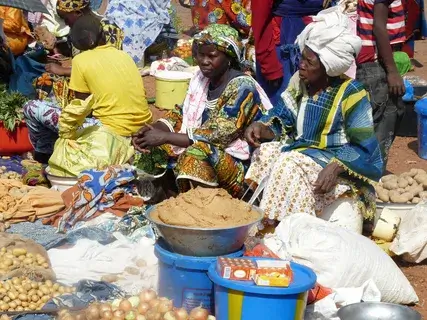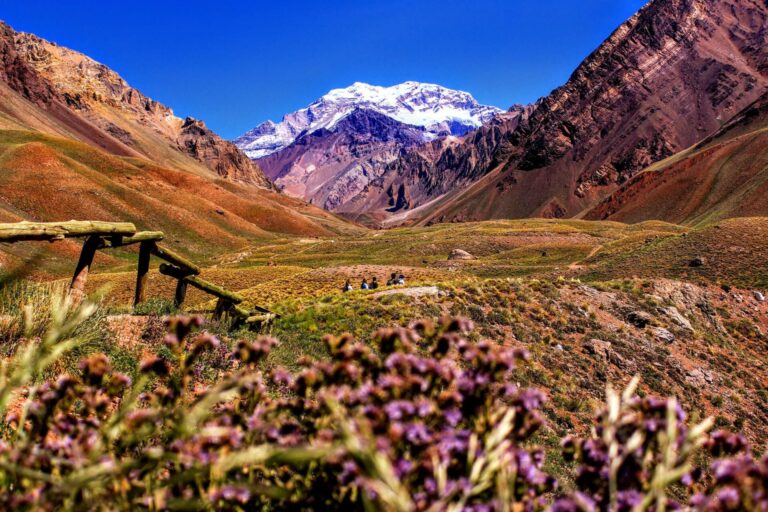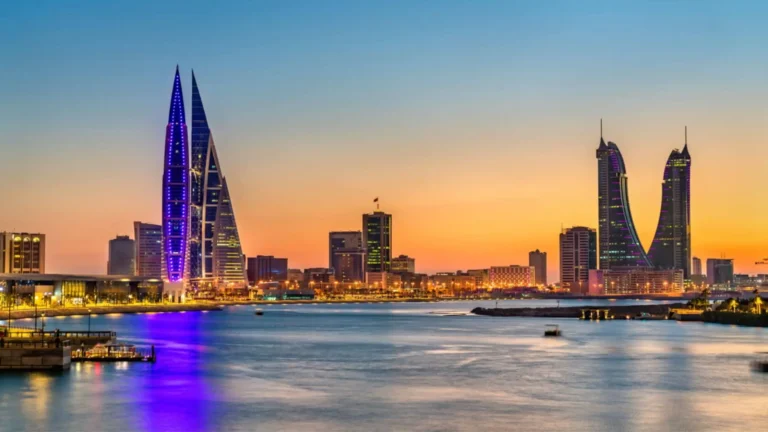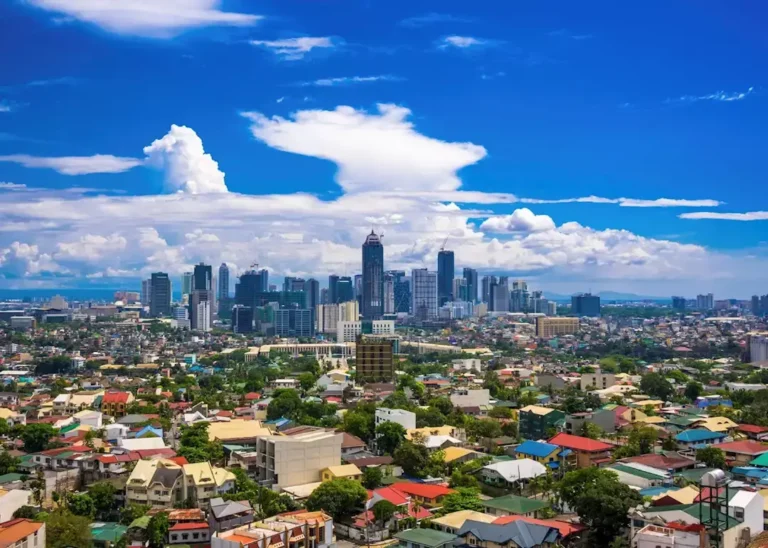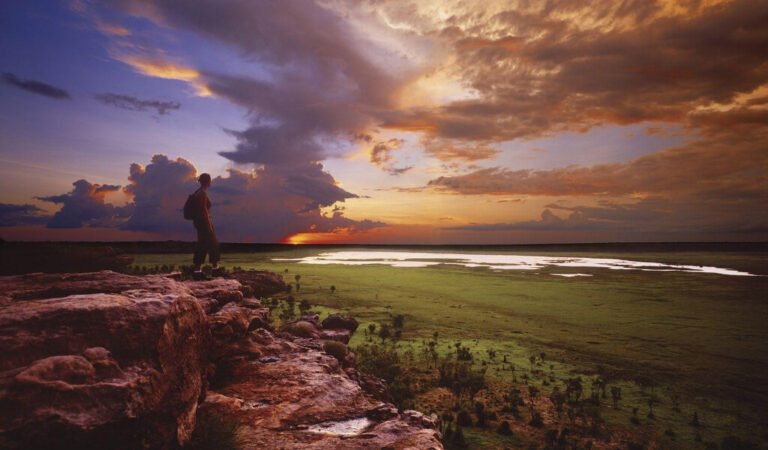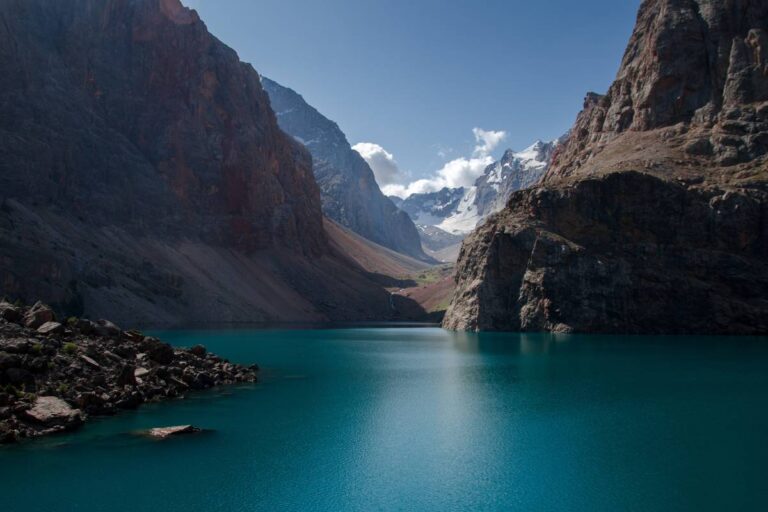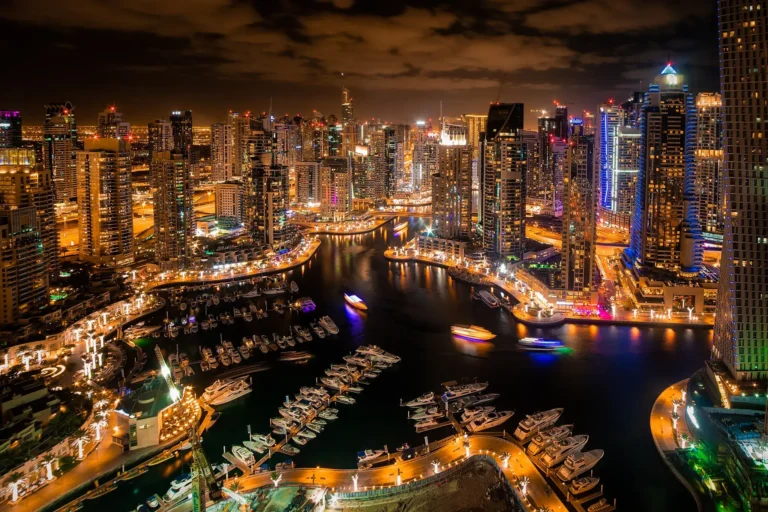Our Top 5 Best Places to Visit in Guinea
Unveiling Guinea’s Hidden Treasures: 5 Must-Visit Places

Are you ready for an off-the-beaten-path adventure in West Africa? Guinea, a hidden gem nestled between Guinea-Bissau, Senegal, Mali, Cote d’Ivoire, Liberia, and Sierra Leone, awaits your discovery.
Prepare to be captivated by its vibrant culture, stunning landscapes, and welcoming people as we explore some of the must-visit places in this lesser-known African nation.
Map of Guinea and Bordering Countries

Map Showing Guinea Location in Africa

Countries Bordering Guinea
Guinea is located in West Africa and is bordered by Guinea-Bissau to the northwest, Senegal to the north, Mali to the northeast, Côte d’Ivoire to the southeast, and Liberia and Sierra Leone to the south. The Atlantic Ocean lies to the west. Conakry is the capital and largest city of Guinea. A port city, it serves as the economic, financial and cultural centre of Guinea. The population of Guinea in 2023 is estimated at approx 14.2 million people. Guinea is often referred to as Guinea-Conakry.
Our Top 5 Best Places to Visit in Guinea
1. Conakry – Where Chaos Meets Charm


Conakry, Guinea’s bustling capital, is an intriguing blend of chaos and charm. Start your day with a hearty breakfast at Le Petit Bateau, a local favorite known for its mouthwatering omelets.
Then, hit the markets of Madina, where vibrant fabrics, handmade crafts, and friendly locals make every corner a photo opportunity. For coffee lovers, Café Mouna in the city center is a cozy spot to sip espresso and people-watch.
Little Gem: The sunset over Iles de Los, just a short boat ride from Conakry, is a magical experience. Grab a cold beer and enjoy the view as the sun dips below the horizon.
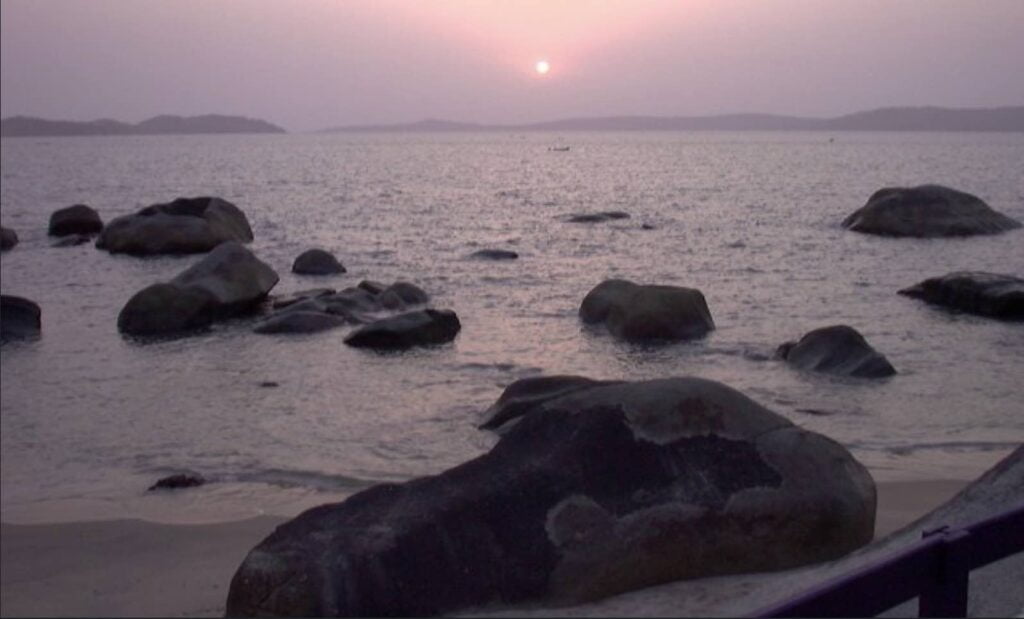
2. Fouta Djallon – Highlands of Serenity

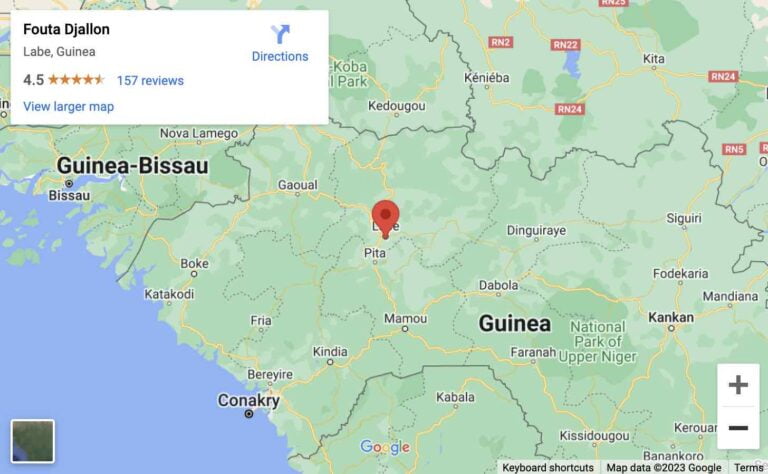

Escape the hustle of the city and head to the tranquil Fouta Djallon highlands. I hiked through rolling green hills, discovering hidden waterfalls, like the stunning Ditinn Waterfall. The locals in the villages along the way were incredibly welcoming, and I was invited to join in their traditional dances.
Little Gem: Try the local dish “riz sauce” for lunch. It’s a hearty plate of rice smothered in a savory sauce that’s both flavorful and filling.
3. Îles de Los – Tropical Paradise Awaits


A short boat ride from Conakry, the Îles de Los are a tropical paradise. Relax on pristine sandy beaches, swim in crystal-clear waters, and snorkel among colorful marine life. For dinner, indulge in freshly caught seafood at a beachfront restaurant.
Little Gem: Take a walk around the smaller islands, like Room Island, where you can find secluded spots for a private picnic.
4. Kindia – The Thrill-Seeker’s Haven


If you’re an adventure enthusiast, Kindia is your playground. I explored the Sarakawa Waterfall and had a blast hiking through the Töguöl region. One day, I even joined locals for a thrilling motorbike ride through lush landscapes.

Little Gem: For the best coffee in Kindia, don’t miss Café Donsoba. Their rich brew is a perfect pick-me-up for your adventures.
5. Labé – Immerse in Culture


Labé is a cultural hub where you can dive into the heart of Guinea’s traditions. Visit the Grand Mosque, a striking architectural masterpiece, and wander through vibrant local markets. I found unique handicrafts and shared stories with friendly locals.
Little Gem: For a memorable sundowner, head to the rooftop of Auberge La Belle Vue. Watching the sunset over Labé’s rooftops is a unique experience.
Did we mention the food? EAT!
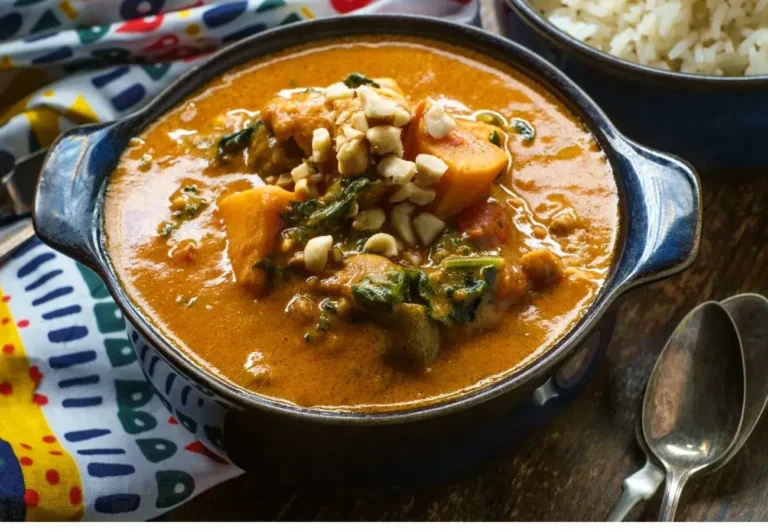
Guinean cuisine is a vibrant tapestry of flavors, a reflection of the country’s diverse cultural influences. One can embark on a culinary adventure by savoring dishes like “jollof rice,” a delicious and spicy rice dish often served with grilled chicken or fish. Another favorite is “domoda,” a rich peanut stew served with tender pieces of meat and vegetables.
For street food enthusiasts, “suya” is a must-try – skewered and grilled meat, usually beef or chicken, coated in a mouthwatering peanut sauce. Wash it all down with a refreshing glass of “bissap,” a hibiscus flower drink that’s both tart and sweet.
Guinea’s cuisine is a delightful fusion of West African flavors, a journey for the taste buds that leaves you craving more with every bite.
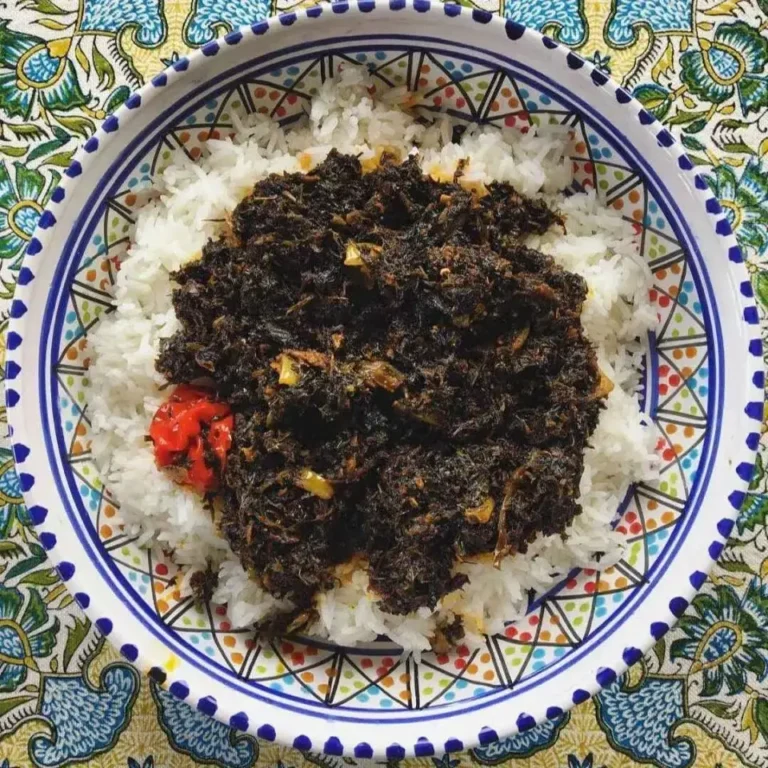
Essential Things to Know Before Traveling to Guinea
Traveling to Guinea, a country located in West Africa, can be a unique and rewarding experience. However, it’s important to be well-prepared before your trip to ensure a safe and enjoyable journey. Here are some essential things to know before traveling to Guinea:
- Entry Requirements and Visa: Check the entry requirements and visa regulations for your nationality before traveling. Make sure your passport is valid for at least six months beyond your planned return date.
- Health Precautions:
- Vaccinations: Consult a travel health clinic or your healthcare provider to get up-to-date on required and recommended vaccinations, such as yellow fever, hepatitis A and B, typhoid, and meningitis.
- Malaria: Guinea is a malaria-endemic area. Take malaria prophylaxis as prescribed by a doctor and use mosquito repellents and bed nets to prevent mosquito bites.
- Water and Food Safety: Drink bottled or treated water and avoid consuming raw or undercooked food.
- Travel Insurance: Purchase comprehensive travel insurance that covers medical expenses, trip cancellations, lost baggage, and other unexpected events.
- Local Laws and Customs:
- Respect for Local Culture: Guinea is a Muslim-majority country with conservative cultural norms. Dress modestly, especially in rural areas, and be respectful of local customs and traditions.
- Photography: Always ask for permission before taking photos of people, especially in rural areas.
- Drugs: The possession and use of illegal drugs are strictly prohibited and can lead to severe legal consequences.
- Safety and Security:
- Political Situation: Stay informed about the political situation in Guinea before and during your trip, as it can sometimes be unstable.
- Crime: While violent crime is relatively low, petty theft and scams can occur. Stay vigilant, especially in crowded places and tourist areas.
- Communication: French is the official language of Guinea. It can be helpful to learn some basic French phrases, as English is not widely spoken outside major tourist areas.
- Currency and Payment: The Guinean Franc (GNF) is the official currency. Credit cards may not be widely accepted, so it’s recommended to carry cash. ATMs are available in larger cities.
- Transportation:
- Roads: Roads can be poorly maintained, and driving conditions may be challenging. If you plan to drive, ensure you have the necessary documentation and follow local driving regulations.
- Public Transportation: Public transportation options are limited. Taxis and shared minivans (“bush taxis”) are common in urban areas.
- Healthcare: Medical facilities in Guinea may be limited, especially outside major cities. Bring a basic medical kit and any necessary prescription medications.
- Electricity: The standard voltage is 220V, and the outlets are of the European two-pin type.
- Cultural Sensitivity: Guinea is home to diverse ethnic groups. Be respectful of local customs and traditions, and ask for guidance if you’re unsure about appropriate behavior.
- Climate: Guinea has a tropical climate with distinct wet and dry seasons. Pack appropriate clothing based on the time of year you’re visiting.
Before traveling, it’s advisable to consult official travel advisories from your government and gather information from reliable sources. Always prioritize your safety and well-being while exploring this vibrant and culturally rich country.
How to Get to Guinea
Getting to Guinea typically involves flying into the country, as it’s the most convenient and common mode of transportation for international travelers. Here’s how you can get to Guinea:
1. By Air:
The primary international airport in Guinea is Conakry International Airport (Aéroport International de Conakry-Gbessia) located in the capital city, Conakry. This is the main gateway for most international travelers to the country.
2. Connecting Flights:
If there are no direct flights from your departure city to Conakry, you might need to take connecting flights. Many major airlines offer flights to Conakry from various international airports. Common layover cities might include major African hubs like Casablanca, Dakar, or Addis Ababa.
3. Booking Flights:
Use online flight search engines and booking platforms to find the best flight options, dates, and prices for your trip. Compare prices, airlines, and flight durations to make an informed decision.
4. Visa and Entry Requirements:
Check the visa requirements for Guinea based on your nationality. Apply for a visa in advance if necessary and make sure your passport has enough validity to meet the entry requirements.
5. Airport Transportation:
Upon arriving at Conakry International Airport, you can arrange for transportation to your accommodation. Many hotels offer airport pickup services. Taxis and car rental services are also available at the airport.
6. Land Border Crossings:
Guinea shares borders with several countries, including Sierra Leone, Liberia, Ivory Coast, Mali, and Senegal. You can enter Guinea overland from these countries, but the availability and condition of border crossings can vary. Check the latest information and travel advisories before attempting an overland journey.
7. Local Transportation:
Within Guinea, transportation options include taxis, minibuses, and private car rentals. While public transportation can be limited in some areas, taxis are commonly used for getting around in cities.
8. Travel Preparations:
Before traveling to Guinea, make sure you’ve done the following:
- Checked visa requirements and obtained the necessary visas.
- Checked for any travel advisories or health alerts.
- Consulted a travel health clinic for necessary vaccinations and health precautions.
- Purchased travel insurance that covers medical emergencies and trip cancellations.
Always ensure that you’re well-prepared and have all the necessary documentation before embarking on your journey to Guinea. Travel conditions and requirements can change, so stay informed and updated as your travel date approaches.
How to Get Around Guinea
Getting around Guinea can be an adventure in itself, given the diverse landscapes and varying levels of infrastructure. While transportation options may not be as extensive as in some other countries, there are still ways to move around within Guinea. Here are the main methods of transportation you can use to get around:
1. Taxis:
Taxis are a common mode of transportation within cities like Conakry. They are often shared, which can make them more affordable. Negotiate the fare before starting the ride or ensure that the taxi uses a meter. Taxis are readily available at major transportation hubs and busy areas.
2. Shared Minivans (“Bush Taxis”):
Shared minibuses or “bush taxis” are a popular way to travel between cities and towns. These vehicles can be crowded and might not adhere to a strict schedule. They are an affordable option, but be prepared for potentially long and uncomfortable rides.
3. Private Hire Vehicles:
You can also hire private vehicles for more comfort and convenience, especially if you’re traveling with a group. Negotiate the fare in advance and discuss the route and schedule with the driver.
4. Motorcycles (“Moto-Taxis”):
Motorcycle taxis, known as “moto-taxis,” are common in many areas. They are often used for short distances and can be a quicker way to navigate through traffic in congested cities.
5. Domestic Flights:
For longer distances between major cities, domestic flights are available. However, flight schedules can be irregular, and it’s advisable to book in advance. Domestic flights can be a time-saving option, especially if you’re traveling long distances.
6. Ferries and Boats:
If you’re traveling along the coastline or near rivers, ferries and boats might be used for transportation. They can be a unique way to experience Guinea’s waterways and connect to more remote areas.
7. Walking:
In urban areas and towns, walking can be a viable option for short distances. Always be cautious of traffic and follow local safety practices.
8. Road Conditions:
Road conditions in Guinea can vary widely. Major roads connecting cities are generally paved, but secondary roads can be rough and unpaved. During the rainy season, road conditions can deteriorate significantly, making travel more challenging.
9. Language Consideration:
French is the official language of Guinea, so having some basic French language skills can be helpful, especially when communicating with drivers and locals who may not speak English.
10. Travel Precautions:
Keep in mind that travel times and conditions can be unpredictable, so plan for delays and be flexible with your schedule. Ensure you have essential supplies like water, snacks, and any necessary medications when embarking on longer journeys.
As you explore Guinea, it’s important to stay informed about local travel advisories, respect local customs, and prioritize your safety and well-being. It’s a good idea to ask locals for advice and recommendations, as they can provide valuable insights on the best ways to get around based on current conditions.
FAQ – Our Top 5 Best Places to Visit in Guinea and Traveling to Guinea in General
Traveling to Guinea: Frequently Asked Questions
1. Q: Where is Guinea located?
- A: Guinea is located in West Africa and is bordered by Guinea-Bissau, Senegal, Mali, Ivory Coast, Liberia, and Sierra Leone.
2. Q: What is the capital city of Guinea?
- A: The capital city of Guinea is Conakry.
3. Q: What language is spoken in Guinea?
- A: The official language of Guinea is French. Various ethnic groups also speak their native languages.
4. Q: What is the currency used in Guinea?
- A: The official currency of Guinea is the Guinean Franc (GNF).
5. Q: Do I need a visa to travel to Guinea?
- A: Visa requirements depend on your nationality. Check with the Guinean embassy or consulate in your country before traveling.
6. Q: Is Guinea safe for travelers?
- A: While Guinea has relatively low violent crime rates, travelers should be cautious about petty theft and scams. Stay updated on the current situation and follow safety guidelines.
7. Q: What vaccinations do I need before traveling to Guinea?
- A: Yellow fever vaccination is mandatory. Consult a travel health clinic for recommendations on other vaccinations, such as hepatitis A and B, typhoid, and meningitis.
8. Q: What’s the best time to visit Guinea?
- A: The dry season from November to April is generally considered the best time to visit, as the weather is more pleasant and suitable for travel.
9. Q: What’s the local cuisine like?
- A: Guinean cuisine is influenced by West African flavors. Rice, cassava, and yams are staples. Dishes often feature stews, grilled meats, and spicy sauces.
10. Q: How do I get around within Guinea?
- A: Transportation options include taxis, shared minibuses (“bush taxis”), private hire vehicles, and domestic flights for longer distances. Road conditions can vary, so be prepared for potential delays.
11. Q: What should I pack for my trip to Guinea?
- A: Pack lightweight, breathable clothing, insect repellent, sunscreen, a basic medical kit, comfortable walking shoes, and a power adapter for the local electrical outlets.
12. Q: Is English widely spoken in Guinea?
- A: While some people in urban areas might speak basic English, French is more commonly spoken. Learning a few basic French phrases can be very helpful.
13. Q: Are there any cultural etiquette considerations to be aware of?
- A: Guinea is a Muslim-majority country with conservative customs. Dress modestly, especially outside major cities, and ask for permission before taking photos of people.
14. Q: Can I drink tap water in Guinea?
- A: It’s generally recommended to drink bottled or treated water to avoid waterborne illnesses.
15. Q: Are there any travel restrictions or safety concerns I should know about?
- A: Stay informed about the political situation and potential travel advisories. Respect local laws, customs, and traditions to ensure a smooth and respectful visit.
Please note that travel information can change, so it’s a good idea to consult official government travel advisories and reliable sources before your trip to Guinea.
Best Places to Visit in Guinea: Frequently Asked Questions
1. Q: What are some must-visit places in Guinea?
- A: Some top destinations in Guinea include Conakry (the capital city), Fouta Djallon highlands, Labé, the Nimba Mountains, and the Îles de Los archipelago.
2. Q: What is there to see in Conakry?
- A: Conakry offers attractions like the Conakry Grand Mosque, the Guinea National Museum, the Botanical Garden, and the lively markets of Madina and Taouyah.
3. Q: What is special about the Fouta Djallon highlands?
- A: The Fouta Djallon region boasts stunning landscapes, waterfalls like Ditinn, and opportunities for trekking and hiking. The town of Labé is a gateway to this area.
4. Q: Are there any UNESCO World Heritage Sites in Guinea?
- A: Yes, the Mount Nimba Strict Nature Reserve, shared with Ivory Coast, is a UNESCO World Heritage Site known for its biodiversity and unique ecosystem.
5. Q: What can I experience in the Nimba Mountains?
- A: The Nimba Mountains offer unique flora and fauna, scenic views, and opportunities for birdwatching and nature photography.
6. Q: Can you tell me about the Îles de Los archipelago?
- A: The Îles de Los consist of three islands—Room, Kassa, and Tamara—known for their beaches, clear waters, and water sports like snorkeling and swimming.
7. Q: Are there any cultural attractions in Guinea?
- A: Yes, you can explore local culture by visiting traditional villages, interacting with local communities, and attending cultural festivals if your visit aligns with the timing.
8. Q: What is the best way to explore rural areas of Guinea?
- A: To explore rural areas, consider hiring local guides who can provide insights into the culture, show you off-the-beaten-path locations, and assist with language barriers.
9. Q: Are there any historical sites to visit?
- A: Yes, places like the Fort of Dinguiraye and the ruins of the city of Télimélé offer glimpses into Guinea’s history.
10. Q: Is it safe to travel to remote areas in Guinea?
- A: While many remote areas can be safe to visit, it’s recommended to research thoroughly, go with reputable guides, and respect local customs and traditions.
11. Q: Can I witness wildlife in Guinea?
- A: Guinea’s diverse landscapes offer opportunities to encounter various species of birds, primates, and other wildlife in their natural habitats.
12. Q: How can I plan my travel itinerary in Guinea?
- A: Research in advance, create a flexible itinerary, and prioritize the places that align with your interests. Consider factors like travel time between destinations.
13. Q: Are there any off-the-beaten-path attractions worth exploring?
- A: Yes, areas like the Badiar National Park offer unique experiences for nature enthusiasts and those seeking less touristy spots.
14. Q: What is the best time to visit Guinea for tourism?
- A: The dry season from November to April is generally considered the best time to visit, as the weather is more pleasant and suitable for travel.
15. Q: How can I ensure I respect local customs and etiquette while visiting attractions?
- A: Research cultural norms, dress modestly, ask for permission before taking photos of people, and be open to learning and engaging with local communities.
Remember that travel information can change, so it’s a good idea to consult updated travel guides and sources to plan your visit to the attractions in Guinea.
You want more on Places to visit in Guinea? ⬇️ ⬇️ ⬇️
Our Top 5 Best Places to Visit in Guinea – Final Thoughts:
Guinea is a land of surprises, where unspoiled nature meets vibrant culture. As you explore its diverse landscapes and connect with its welcoming people, you’ll discover that this West African nation is a treasure trove waiting to be uncovered.
So, pack your adventurous spirit, your camera, and your curiosity—Guinea is calling your name!

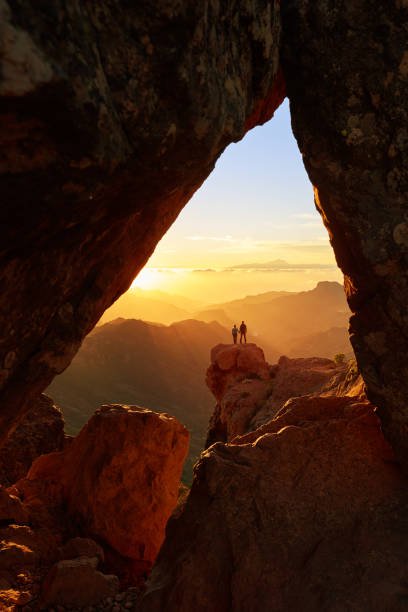
Best Places to Visit in Spain 2023
Spain, a country rich in history, culture, and breathtaking landscapes, beckons travelers with its vibrant cities, stunning beaches, and captivating architecture. From the enchanting streets of Barcelona to the sun-kissed shores of the Costa del Sol, Spain offers a diverse array of destinations to explore..

Europe: A Tapestry of Diversity, Culture and Adventure
Europe, a continent as diverse as it is beautiful, is a traveler’s dream come true. From the snow-capped peaks of the Alps to the sun-kissed beaches of the Mediterranean, Europe offers an enchanting mix of experiences for every type of traveler. Join us as we embark on a journey through the heart of Europe, discovering…

Our Top 5 Best Places to Visit in Kuwait
Discovering Kuwait: Journey Through its Hidden Treasures Hey fellow wanderlusters, let’s dive into Kuwait’s kaleidoscope of culture, where the past meets modernity. I’ve uncovered five must-visit spots for the young and adventurous traveler. From sipping on sweet tea under Bedouin tents to catching epic sunsets, Kuwait is an adventure waiting to happen. Map of Kuwait…

Our Top 5 Best Places to Visit in Dominica
Dominica: Where Adventure Meets Paradise Welcome to Dominica, the “Nature Island” of the Caribbean. If you’re seeking a destination that’s off the beaten path, brimming with natural wonders and adventure, you’ve found it. Here, you’ll explore lush rainforests, soak in rejuvenating hot springs, and dive into sparkling turquoise waters. Let’s embark on a journey to…
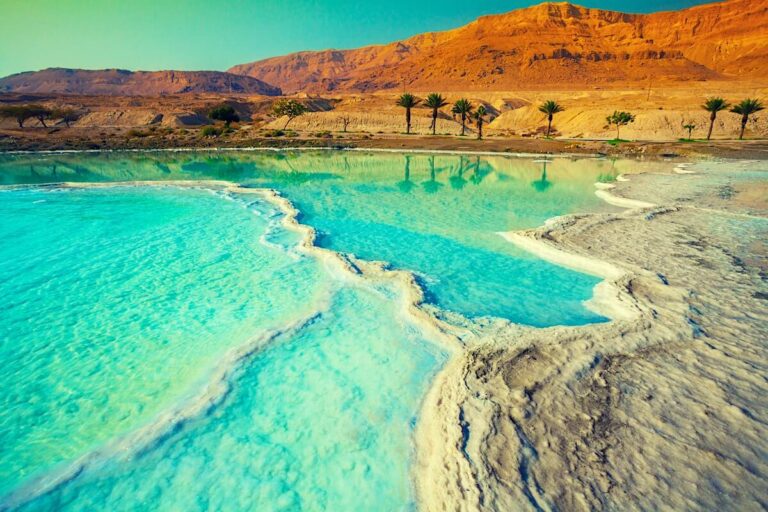
Our Top 5 Best Places to Visit in Jordan
My Journey Through Jordan’s Top 5 Destinations If you’re ready to dive into a world of ancient wonders, surreal landscapes, and incredible experiences, then Jordan is calling your name. Let me take you on a ride through my unforgettable journey as I uncovered the 5 best places to visit in this captivating country. Map of…

Our Top 5 Best Places to Visit in Lebanon
Lebanon Unveiled: Exploring the Mystique of the Middle East Welcome to the captivating land of Lebanon! Nestled along the Mediterranean Sea, this enchanting country is a treasure trove of history, culture, and natural beauty. Let’s embark on a journey to discover some of the most mesmerizing places that Lebanon has to offer. Map of Lebanon…

Our Top 5 Best Places to Visit in Iraq
Discovering the Hidden Gems of Iraq Nestled in the cradle of ancient civilization, Iraq is a land where history comes alive at every turn. Beyond the headlines, this Middle Eastern nation offers a tapestry of cultural richness, stunning landscapes, and historical significance. In this travel blog, we’ll uncover seven must-visit places in Iraq that showcase…
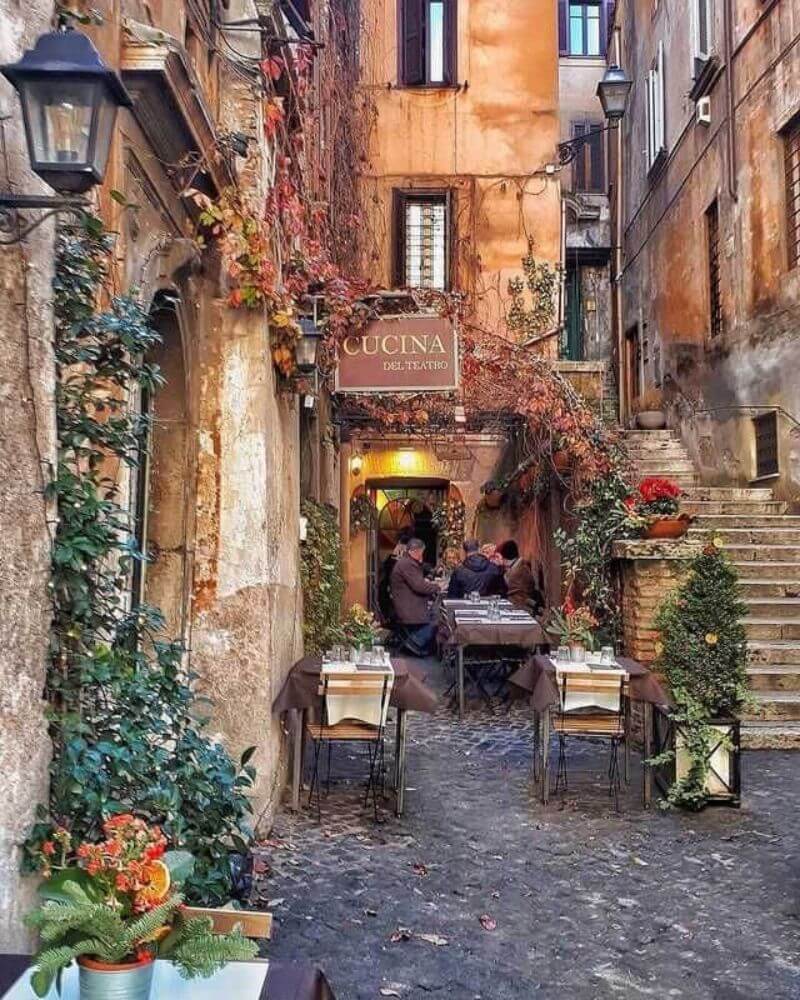
Best Places to Visit in Italy 2023
Italy, a land of romance, rich history, and breathtaking landscapes, beckons travelers with its magnetic allure. From the captivating cities adorned with timeless architecture to the picturesque coastal towns and rolling vineyards, this Mediterranean gem offers a plethora of unforgettable experiences..
Exploring Greece’s Timeless Treasures: Greece Best Places to Visit Top 10
Exploring Italy’s Treasures: The Best Places to Visit in Italy in 2023
Our 10 Best Places to Visit in Venice Come Explore the Enchanting Floating City
Unveiling the Enchanting Beauty: Our Best Places to Visit in Florence
Our Best Free Places to Visit in New York That are yes, Absolutely FREE!
Our Best 10 Affordable Vacation Destinations if you are on a tight budget.
Our 10 Best Budget Travel Tips: Explore the World Without Draining Your Bank Account.
These are our Top 10 Best Travel Destinations Worldwide 2023
Our Absolute Best list of 10 Less Touristy Places to Travel in Europe 2023
Australia: A Traveler’s Paradise: Best Australian Destinations 2023
Our Top 5 Best Places to Visit in Guinea – By David John
5 Best Places to Visit in Guinea Cover Image by unesco
Best Places to Visit in Guinea flickr images licensed under CC BY 2.0
Additional images: adobe · colourbox · istock · pexels · shutterstock · unsplash unless otherwise stated.
Were our Top 5 Best Places to Visit in Guinea helpful to you?
Let us know your thoughts in the comments below..
And if you are looking for a specific piece of information, please do comment below..


